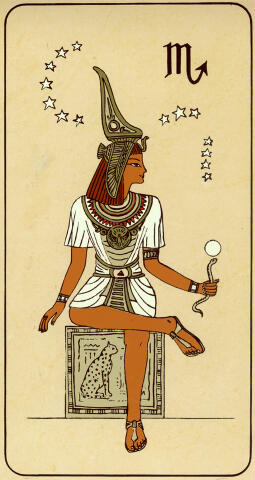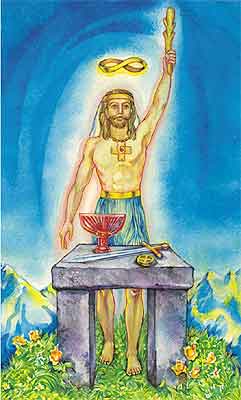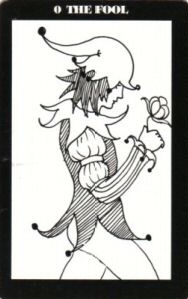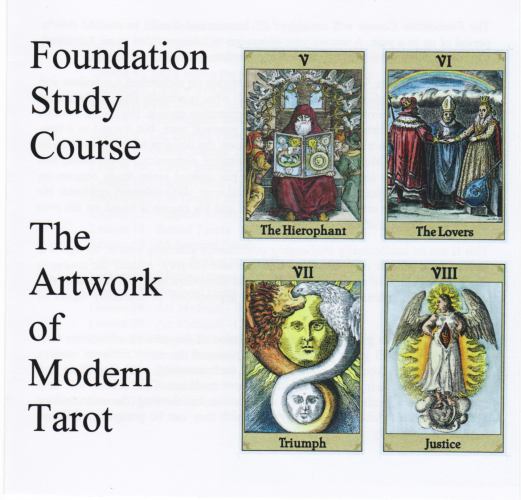by Adam McLean
   
|
 Modern tarot designs began from about the 1960's and there have been well over 2000 tarots decks published in the last fifty years. With such a mass of material available it is very difficult for people to get a overall picture of exactly what is going on in this exciting world of tarot symbolism. There now exist such a wide variety of tarots, from those designed by major artists, through a spectrum down to simple promotional decks given away free in magazines. All of these provide a window onto our contemporary culture. They are like the emblem books of the 16th and 17th centuries, communicating universal and deep ideas within a seemingly simple framework. Tarot designs are usually the work of enthusiasts and their artwork reveals clearly their intentions and the way they think about the world. There are mythological, shamanistic, magical, psychological, dark and serious, light and playful tarots. There are tarots celebrating all sorts of interests, addressing various issues. There are regional tarots in which an artist tries to locate tarot imagery within their own culture or region, tarots in the style of various earlier artists and so on.
Modern tarot designs began from about the 1960's and there have been well over 2000 tarots decks published in the last fifty years. With such a mass of material available it is very difficult for people to get a overall picture of exactly what is going on in this exciting world of tarot symbolism. There now exist such a wide variety of tarots, from those designed by major artists, through a spectrum down to simple promotional decks given away free in magazines. All of these provide a window onto our contemporary culture. They are like the emblem books of the 16th and 17th centuries, communicating universal and deep ideas within a seemingly simple framework. Tarot designs are usually the work of enthusiasts and their artwork reveals clearly their intentions and the way they think about the world. There are mythological, shamanistic, magical, psychological, dark and serious, light and playful tarots. There are tarots celebrating all sorts of interests, addressing various issues. There are regional tarots in which an artist tries to locate tarot imagery within their own culture or region, tarots in the style of various earlier artists and so on.What this course is not about: What this course does attempt to teach: This course parallels Adam McLean's other courses on alchemical symbolism and adopts a similar methodology. He tries to find what is actually there in the image or symbol without projecting an external interpretation upon it. His stance towards the artwork of modern tarot is not based on personal taste, but instead in a non-judgemental way he tries to explore and discover the delights of the artwork in its own terms. Adam McLean has extensively studied alchemical, emblematic, and esoteric symbolism for nearly 40 years. He has created seven study courses on alchemical symbolism and texts, and produced over 1000 coloured emblems. He has now turned his attention to modern tarot and his course is based on his own extensive collection of over 2100 tarots. This is not an intellectually challenging or primarily scholarly course, though it is written by a scholar of symbolism, emblems and allegory. Instead the course is designed as a kind of exploration of the world of modern tarots. At the end of this course you are guaranteed to have a wide appreciation of the many facets of modern tarot. |
Lesson 1: The orientation of this course Lesson 2: The guises of the tarot Fool Lesson 3: The different types of tarot - Purposes and intentions Lesson 4: Tarot with a purpose - Some issue decks Lesson 5: Tarot with a purpose - Some promotional decks Lesson 6: The different types of tarot - Themed decks Lesson 7: Shakespeare themed decks Lesson 8 : Cat themed Tarots Lesson 9 : Gothic themed Tarots Lesson 10 : Tarots printed in books Lesson 11 : Tarots based on books Lesson 12 : The Death Card Lesson 13 : Magical Tarots Lesson 14 : Round Tarots Lesson 15 : Alchemical Tarots Lesson 16 : Some further perspectives to consider Lesson 17 : Regional tarots - Japanese Lesson 18 : Regional tarots - Chinese Lesson 19 : Art Medium - Watercolour Lesson 20 : Art Medium - Coloured pencil Lesson 21 : Regional tarots - Russian Lesson 22 : Erotic themed Tarots Lesson 23 : European Art Tarots Lesson 24 : Naive tarots Lesson 25 : Conclusion |
Adam McLean is well known as a researcher into alchemy and expert in emblematic symbolism as well as an accomplished artist. He has created seven study courses on alchemy related matters, and his Foundation course on alchemical symbolism has been taken by over 800 people. He has now turned his attention to the artwork of modern tarot and in this new course he will give insights into modern tarot art, and help people to analyse and contextualise this fascinating emblematic material.
Please note these lessons are copyright © Adam McLean, and no part may be reproduced or distributed in any form (including the Internet) without the permission of Adam McLean.

 Facebook page
Facebook page